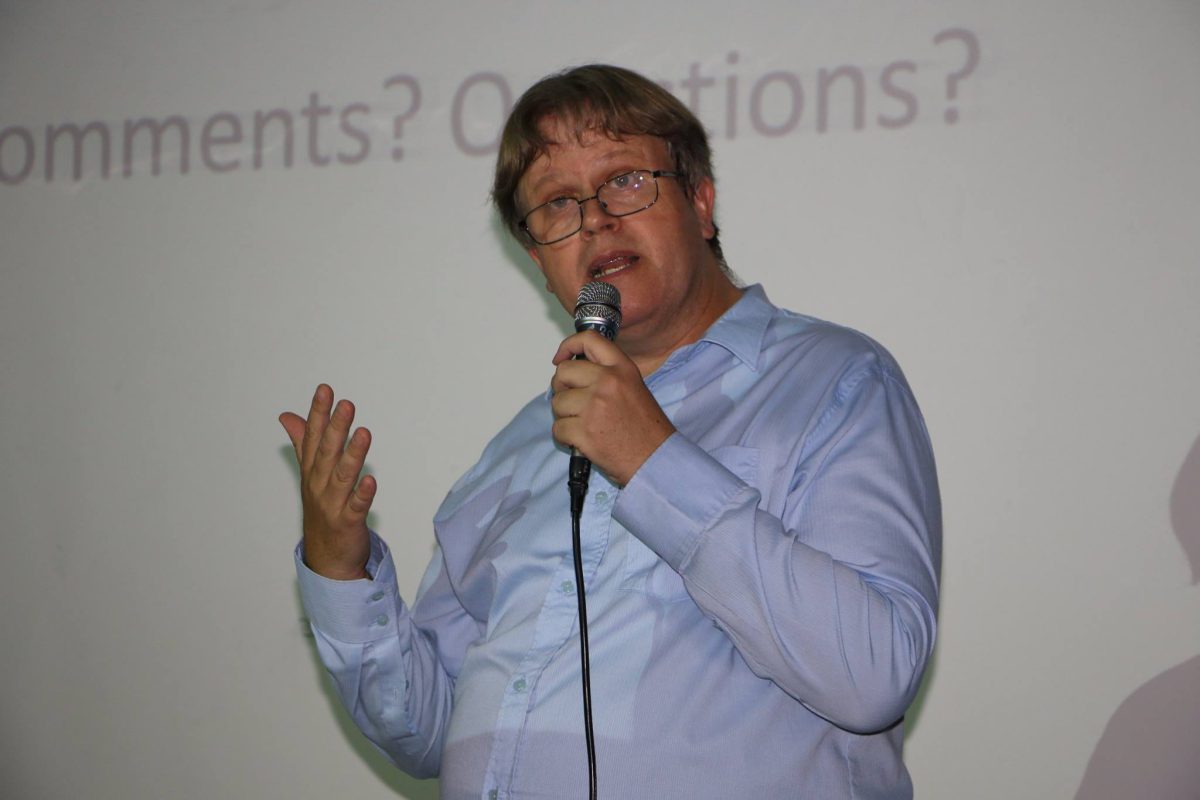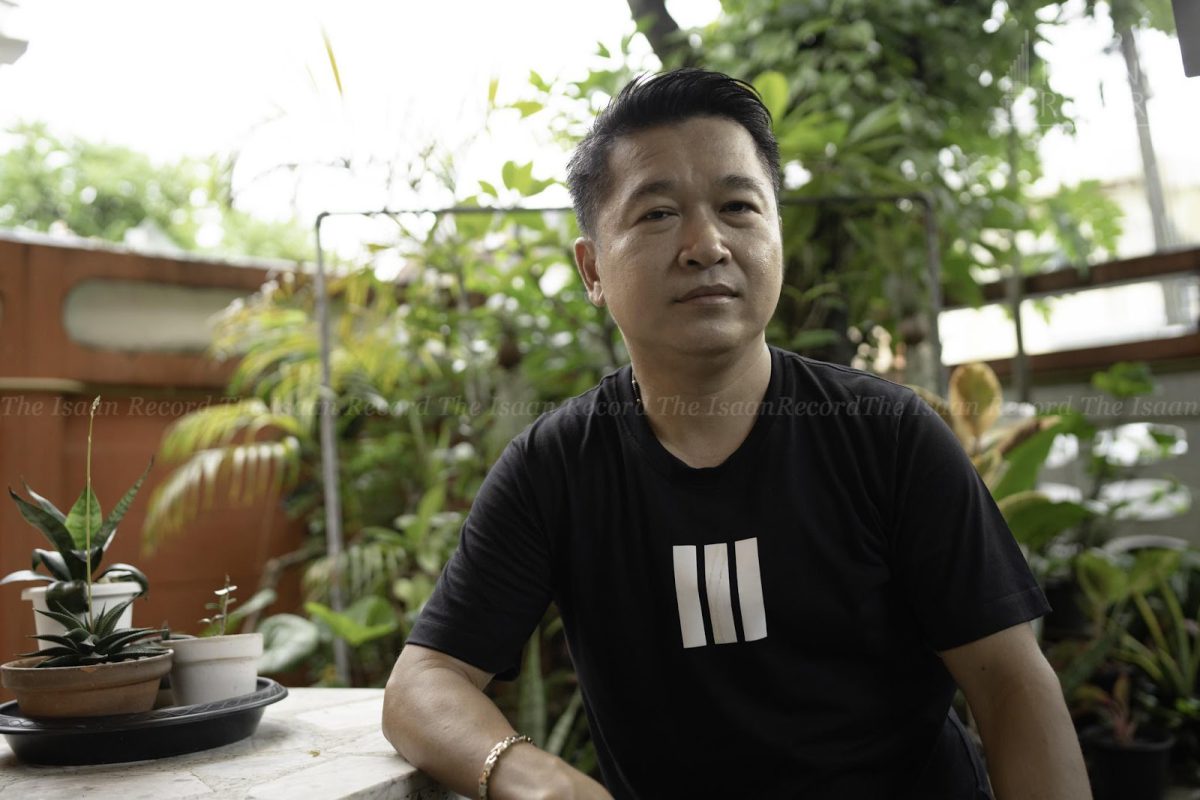Hydropower generates 7,000 megawatts of energy in Thailand alone. Isaan Record’s Olivia Everett sits down with Geography Professor Ian Baird of the University of Wisconsin-Madison to see how dams impact people in and out of the country.
Thailand is the largest energy consumer out of all the countries along the Mekong River, according to BP. This consumption funds many of the dams built throughout the region.
While hydropower may seem like a better deal for Thailand, the academic Ian Baird has found the destructive potential of dams on the Mekong River, the effects of which are starting to be felt within the borders of Thailand.
‘The Flooded Forests Are Dying’
After researching areas along the Mekong River for three decades, Baird knows firsthand the effects that large-scale dams have had on the people living in the Mekong River Basin.
His most recent research led him to northeastern Cambodia, an area downstream of several major dams. There, he discovered that they are inundating forests with excessive water during the dry season.
He wants people to understand, “First of all, there’s more water in the river than there used to be in the dry season, and that is a bad thing,” said Baird. “And as there are more dams and more water collected [during] the rainy season and released in the dry season, that will have more [downstream] impacts in the future.”
He blames drought conditions in Thailand for the popular misconception that the river is now running dry “because, historically, of course, when there was less rain, there was less water in the river.”.
However, this is no longer the case.
“But nowadays, the difference is that they built these large dams that have the ability to collect water in the rainy season and release it in the dry season.”
Examples of such dams with large reservoirs are the Xiaowan and Nuozhadu dams in China, and the Nam Theun 1 and 2 dams along with others on Mekong tributaries in Laos, Baird says. They are the reason for the increase of water in the Mekong region during the dry season, he adds.
Increases in water flow during the dry season, which allows for power generation year-round, throws downstream environments in Isaan and Cambodia into disarray.
Habitats that shelter aquatic life (e.g., the roots of the seasonally flooded trees) are being lost, and this can be expected to negatively affect fish and other aquatic life. This, in turn, impacts the local people who rely on the river’s resources for food and income.
“What local people understand, and what ecologists or other people who study rivers understand, is that evolution has occurred over thousands and thousands of years,” Baird says. “All the different species that rely on the river have evolved to live in these conditions.”
Dams alter seasonal changes in water levels. As a result, species that took thousands of years to adapt are struggling to catch up.
“The different plants and animals that rely on the Mekong cannot adapt easily to those dramatic changes caused by dams,” Baird says. “And that’s why the flooded forests are dying.”
These trees provide a habitat for other plants and animals as well, including sandbar nesting birds and shellfish. When the trees die, it causes a chain reaction of destruction along the rest of the ecosystem.
“Then that impacts the lives of a lot of rural people” who rely on the Mekong for sustenance and profit, he says.
“Having more water in the dry season, you know, local people along the river don’t believe that that’s a good thing,” Baird says. “They believe that it’s a problem.”

‘The River Doesn’t Know Borders’
Harms caused by disrupting the natural river flow affect Cambodia and all the countries that lie within reach of the Mekong. Despite this, the Thai government has ignored its own role in the problem.
Baird observes, “There needs to be greater awareness, and they [Thai planners] also have to understand that if they buy hydropower energy from Laos or from other countries that are making these dams, they’re causing the problem. Energy consumption in Thailand is having a big impact on the river.”
Baird says that the problems flowing from the river require cooperative solutions as “the river doesn’t know borders.”
“People need to think outside their regional boxes,” he says and they need to be aware that this issue impacts everyone.
They should also acknowledge that this issue affects people within their nation’s borders. Those living off the rivers in Isaan have and will suffer the consequences of the actions of those in power.
Thailand can influence both its constituents and powerful figures in other countries.
“Within the region, all the other countries look at Thailand as kind of ‘the big power,’” Baird says. “People in Thailand generally need to think more about how their actions in neighboring countries affect the whole region.”
Transnational Means Unaccountable
The Mekong River Commission, or MRC, publishes a multitude of research regarding the river, is instrumental in monitoring the effects of dams, and has the potential to help people that they impact directly.
The commission says economic gains from hydropower in the region could reach as high as $160 billion by 2040 and provide irrigation for millions of people.
But what can it do about the projects that cause detrimental effects throughout the region?
One major obstacle, Baird notes, is that only four out of six of the countries in the Mekong River Basin are members of the organization. “China and Myanmar are not. That is a limitation of the MRC: it does not cover the whole [river] basin.”
Because the Xiaowan and Nuozhadu dams in China cause about “50%” of these downstream issues, says Baird, this is a huge problem. They are not held accountable by this organization.
Another problem Baird cites is that “only the governments have votes” within the MRC, while average people or stakeholders have no way to get involved.
“The problem is that national interests get in the way of local interests,” he says.
The people directly impacted cannot have their voices heard. They are forced to live with the consequences of the decisions made by people whose lives are not altered by their own choices.
Despite this drawback, Baird believes MRC can still be effective. “But we shouldn’t be overly reliant on them,” he says.
‘Linked by the River’
Asked what the public should know about the issue, Baird points to his own recent findings.
“Too much water in the dry season is not a good thing,” he says, noting that it “causes on people and the environment.”
He further emphasizes that people should be conscious of how the choices of their leaders alter the lives of people in Isaan and other countries.
Even if they ignore the effects, eventually they will show up at their door because “they’re linked by the river, whether they like it or not,” Baird states.

‘The Trees are Dying in Isaan’
Thailand plays a major role in what happens – or doesn’t happen – next. Thai courts have dashed any hope that turning to the legal system may provide an answer. Last year, the Supreme Administrative Court in Bangkok dismissed a decade-old case launched by local people and activists bordering the Mekong River who claimed that Thai government actions to develop and purchase the electricity from the Xayaburi dam in Laos have had a negative impact on their livelihoods and lacked adequate public consultations.
The court ruled that there was “no clear and direct impact on the environment and people” and that the Thai agencies carried out proper “Procedures for Notification, Prior Consultation and Agreement.”
“Thailand could do a lot more to reduce the effects if they wanted to,” Baird says. But at the moment, it is not.
For government leaders in Bangkok, buying hydropower energy and outsourcing all the building to Laos is seen as beneficial: they get to import thousands of megawatts of energy while not having to build dams in their own territory.
The dams the Thai government funds in Laos, though, lead to effects downstream, in Isaan.
“If the people in Isaan want to protect their livelihoods, their environment, they need to influence the government in Bangkok,” Baird says.
It is up to the people to make their case known.
Pressure grows, as concerns have breached the borders of Thailand.
While some Thais may believe the issue is a problem for others, Baird notes that there are some living along the river in Ubon Ratchathani province who “are noticing that the trees are dying in Isaan as well.”
Next year, Baird will return to Isaan to conduct further research in March and April to see the effects of the dams firsthand. If the findings are similar to what he’s found in Cambodia, the people of Thailand may no longer be able to ignore the downsides of hydropower.
Resources:
- BP. (2022). Statistical Review of World Energy 2022. bp.com.
- Mekong River Commission. (n.d.). Hydropower. Mekong River Commission for Sustainable Development.
- RFA Lao. (2022, Aug. 8). Thai court dismisses Mekong River activists’ case against Xayaburi Dam in Laos. Radio Free Asia.





